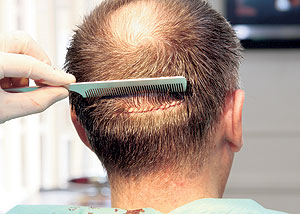How to Remove an Existing Hair Transplant Scar
 Hair transplant surgery is designed to restore hair in men and women depending on the condition. For most, this is done in the event of male or female patterned hair loss. Others may use this procedure for other areas of the body that may have once had hair like the eyebrows and others to place hair like facial hair or where they may see fit. The only remaining issue is the scar that remains in the donor area after a hair transplant procedure.
Hair transplant surgery is designed to restore hair in men and women depending on the condition. For most, this is done in the event of male or female patterned hair loss. Others may use this procedure for other areas of the body that may have once had hair like the eyebrows and others to place hair like facial hair or where they may see fit. The only remaining issue is the scar that remains in the donor area after a hair transplant procedure.
Can this be avoided? Is there any way to remove or conceal an existing scar?
Depending on the procedure, the scar can either be avoided or minimized. Follicular unit extraction (FUE) is an advanced hair transplant procedure where hair graft units are selectively extracted and refined without leaving a linear scar in the donor area. This technique has also been used to transplant hair into an existing hair transplant scar. This is one technique used to conceal a donor area scar but it does not remove it. The objective is to conceal the scar as much as possible.
For those patients looking into hair transplant surgery, follicular unit transplantation (FUT) is the golden standard in hair restoration. There are ways to minimize the scar’s appearance. In most cases, a hair transplant surgeon can use single or dual trichophytic closure to minimize the visibility of the scar in the donor area. This technique allows hair to grow in through the scar creating an illusion and concealing the scar. Patients whom have had a hair transplant procedure can undergo scar revision and have the existing scar excised and reclosed using this technique if it has not already been done.
As stated, the objective is to minimize the visibility of the donor scar. If the patient is undergoing hair transplant surgery through FUT, you must bear in mind that a scar will still be present. It has been noted that Botox can also be used to avoid additional stretching of the scar further preventing visibility. This should be taken care of right after a hair transplant procedure. These options should be discussed with your hair transplant surgeon to assure that you are getting exactly what you want out of your hair transplant procedure.
Tags: hair restoration scar, hair scar, hair transplant scar, how to remove hair transplant scar, remove hair restoration scar, remove hair transplant scar, remove scar
